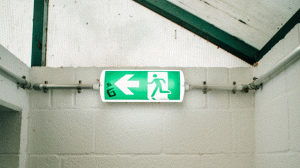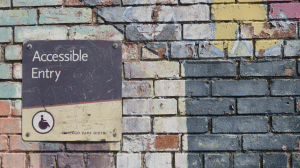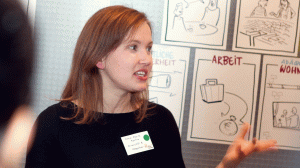- Sustainable Development Goals
- The Sustainable Development Goals (SDGs) of the United Nations are 17 goals which the international community has agreed upon. In 2015, they replaced the Millennium Development Goals and became part of Agenda 2030. The SDGs aim to unite member states under a common strategy for sustainability. 244 indicators are used to measure progress on the 17 sustainability targets.
Good news first
Overall, the latest global progress report on the SDGs paints a promising picture:
-
More and more people are living above the absolute poverty line.
-
Fewer children under age five are malnourished, thanks to a steady food supply.
-
The number of people dying from infectious and non-communicable diseases is steadily declining.
-
Fewer women die during childbirth.
-
Unemployment is decreasing worldwide.
-
The proportion of people living in slums has declined.
-
More and more children, especially girls, have access to education.
These results align with those of the 2017 Social Progress Index, another important tool for measuring global sustainable development. This survey renounces the traditional, purely economic approach to measuring development and instead examines nations’ progress across 12 different social conditions, including "water and hygiene,” "personal safety," and "tolerance and inclusion.”
The researchers found that social progress has accelerated worldwide since their last survey in 2014. With increased availability of information, better communication tools, and improved access to higher education, most countries have experienced positive social development.
Development in Germany
Germany is no exception to this encouraging trend. Overall, our country ranked 13th in the Social Progress Index, complementing its attainment of the world’s 11th-largest GDP.
The Federal Statistical Office’s report on the SDG indicators is also promising. Germany is well on its way to reaching the sustainable development targets by 2030, and is already on track to meet the following goals:
- Produce its share of sustainable energy
- Increase the number of children who can attend school
- Increase the employment rate
- Prevent corruption
All in all, we can take comfort in the fact that these indicators are moving in the right direction ...
... Yet we still have plenty of work to do.
"Despite progress with #SDG and #SPI, we cannot rest. #SocEnt @ dr.schnuw"
And now to the bad news
While the results of the SDG report and the Social Progress Index are generally promising, some alarming trends require urgent action.
Economic growth has its disadvantages
As people around the world gain more work, more free time, and more disposable income, they are consuming goods at an unprecedented rate. However, increased consumption does not necessarily mean improved standards of living.
One disturbing consequence of the booming consumer economy is a worldwide rise in obesity. The widespread availability of processed, high-sugar foods, coupled with increasingly sedentary lifestyles, has led to a rapid increase in the prevalence of this issue. In Germany alone, the percentage of overweight adults escalated from 3.4% in 1999 to 14.1% in 2013. This unfortunate trend suggests that obesity may soon become a public health challenge just as serious, widespread, and intractable as world hunger.
"Obesity is becoming a major challenge in Germany." #SocEnt @ dr.schnuw
Ecological sustainability is difficult to achieve
While great strides have been made in global economic and social development, the environment continues to suffer. In spite of increased protective measures, human activities continue to degrade natural ecosystems and drive climate change, as described in both 2014 and 2016 reports. The painfully slow transition to sustainable energy sources (particularly in the transportation sector) is a major source of this problem. In Germany, for example, the steady increase in driving has offset improvements made in fuel efficiency (an issue known as the “rebound effect”). Throughout the world, man-made deforestation continues to disrupt ecosystems and increase atmospheric carbon dioxide. The resulting decline in biodiversity, melting of sea ice and glaciers, and increase in average global temperatures poses a dire threat to us all.
Part of what makes social-ecological development so challenging is its inextricable link to the other SDGs. For example, environmental sustainability cannot be achieved until poverty is reduced (SDG Objective 1), because the poor are often compelled to use unsustainable practices for survival (e.g., cutting down trees for firewood). Conversely, economic growth that increases the consumption of natural resources also damages the environment. If we really want to create a more sustainable world by 2030, we must make every effort to achieve all 17 SDGs.
Your support is needed
The UN’s Sustainable Development Goals will be out of reach unless all stakeholders – including states, enterprises, and NGOs – make a collaborative effort to achieve them. While many tried-and-true solutions already exist to today’s most common social issues, opportunities for innovation on many challenges abound.
Your support is needed! Which of the SDGs will you take on?
Originally published September 27, 2017










